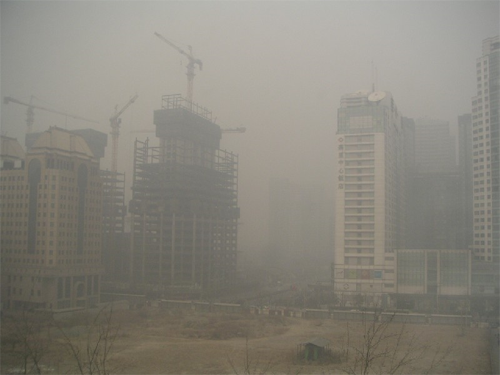It’s not just on the city’s streets where we are at risk from dangerous PM2.5 particulates – three-quarters of daily personal exposure is indoors
http://www.scmp.com/news/hong-kong/health-environment/article/2097540/exposure-pollution-hong-kong-worst-home-study
Your home may be your refuge in Hong Kong, but not from air pollution. It’s probably worse.
Exposure to PM2.5 particulates small enough to lodge deep in the lungs and most harmful to human health have been found to be just as high – or higher – inside people’s homes as they are outdoors or during the commute to work on an average weekday.
A two-year study by think tank Civic Exchange and City University, funded by investment bank Morgan Stanley, found that most urban dwellers are exposed to concentrations of PM2.5 during their daily commute that are almost always above average limits set by the World Health Organisation, and generally above readings at the nearest air quality monitoring station.
Breathe easier, Hong Kong is on course to hit global air pollution target
While the Environmental Protection Department’s 16 stations can monitor and assess ambient and roadside air quality across districts, the study fills a relatively wide gap in statistics on individual-level exposure to pollution in different “micro-environments”.
Co-author Dr Zhi Ning reported finding that people were exposed to air pollution risks not just outdoors but also indoors at home or the office.
“Your 24 hours are spent in different environments,” the City University air pollution expert said. “You may think that even if its very polluted outside, you are more safe inside. But it really depends on what that indoor environment is like.”
The researchers employed 73 volunteers who carried lunchbox-sized “personal exposure kits” fitted with sensors and GPS, 24 hours a day for a year around the city.
They found that most spent more than 85 per cent of each weekday indoors, which broke down to 42 per cent of the day at home, 34 per cent in the office, 4 per cent commuting and 11 per cent outdoors or in other indoor areas.
Homes were found to contribute 52 per cent of an individual’s personal exposure to PM2.5 compared with 13 per cent for offices, 4 per cent while commuting, 18 per cent outdoors and 14 per cent in other indoor areas.
The average PM2.5 concentration measured in homes – 42.5 micrograms per cubic metre – was three to four times lower than outdoors but slightly higher than while commuting and three times higher than in the office.
Factors for the PM2.5 build up in homes, Ning surmised, could range from cooking and the type of gas used to proximity to a construction site or smoking tobacco. And this was exacerbated by poor ventilation and dirty air filters. Offices tended to have better ventilation systems. Flats on lower floors were also exposed to more pollution.
But Ning found little correlation between personal exposure and district pollution. A person who spent more time in better ventilated indoor areas in heavily polluted Sham Shui Po, for example, could have a lower exposure to PM2.5 than the station reading and vice versa.
“Right now we only rely on [the department’s] data but they only provide a general, ballpark figure,” Civic Exchange research fellow and co-author Simon Ng Ka-wing said.
“It is important to know how much air pollution we are exposed to on a personal level. This would allow us to make better decisions as to when to go or not to go somewhere.”
The study recommended the government do more to promote better indoor air quality in homes and implement a comprehensive management programme.
A government spokesman said: “The EPD has been conducting promotional and educational activities, including exhibitions and seminars, to promote practices to achieve good indoor air quality.”
Additional reporting by Brian Wong
